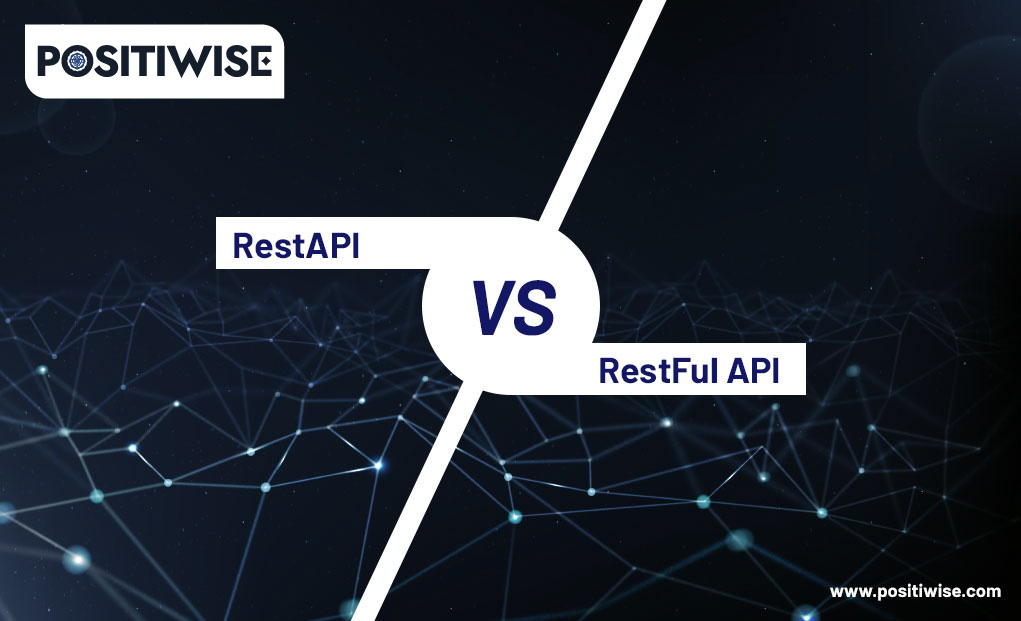Quick Overview:
The RESTful API has undergone significant updates and improvements over the years. There are now different versions to choose from: RestFul, RestEasy, and even Restlet. The RESTful API and REST API APIs both serve the purpose of building web applications. The RESTful API enables a server to be accessed through the HTTP protocol. It is a traditional client-server model that doesn’t require a lot of server logic. Typically, developers build RESTful APIs on top of HTTP.
However, users find unique differences between all the different terms in programming languages, making them more suitable for specific uses.
So, in this article, let’s quickly look at the difference between REST API and RESTful API.
What is REST API?
REST API is a method of programming that allows you to communicate with a microservice quickly and efficiently. The client and server communicate through HTTP in a REST API, making it the most crucial aspect. Developers use the REST API as a software design pattern to create applications that interact with server-side web services via HTTP requests and responses.
The REST API has become the standard for developing microservices today. It allows you to separate your functionality into many small services so that each service can be designed separately and independently from the other. REST stands for Representational State Transfer, an architectural style and design principle aiming to create self-describing and self-descriptive interfaces. REST is a software design pattern that uses the HTTP protocol to define a stateless interface. In other words, it’s a way to build web applications independent of specific server-side technology.
Main principles of REST (Representational State Transfer) APIs:
- Resource-based: REST APIs access and manipulate resources (data entities) via URI endpoints. For example, https://api.example.com/users/1234 accesses the User resource with ID 1234.
- Stateless: REST API requests are standalone and unrelated. The server does not retain the client state between requests. The session state is maintained on the client side, often using cookies or tokens.
- Cacheable: REST API responses indicate if they are cacheable or not. This improves performance and scalability by avoiding redundant requests.
- Uniform interface: REST APIs use standard HTTP methods like GET, POST, PUT, and DELETE for CRUD operations on resources. This provides a universal and familiar interface.
- Layered system: REST APIs are client-server based. Clients don’t know if they are connected directly to the server or intermediaries like caches or load balancers. This abstracts infrastructure for scalability.
- Code on demand (optional): REST servers can optionally send executable code like JavaScript to clients. This enables further client functionality.
What is RESTful API?
A RESTful API is an Application Programming Interface (API) that uses the Representational State Transfer (REST) architectural style for its implementation. It is a set of Rest API methods, status codes, and content types used to interact with resources (data) on the Internet via HTTP or other protocols.
A RESTful API allows your software application to communicate with another application or service using only HTTP requests and responses. This implies that your application doesn’t need to know about the internal implementation of the service it’s talking to; all it needs are your application’s endpoints.
The RESTful API software helps you access various applications, databases, and services that are connected through the rest of web services. You can use this tool to communicate with other users and systems via the HTTP request/response mechanism, making it ideal for building custom software applications.
The primary components of a RESTful API
- Resources: These are the objects or data entities exposed by the API. For example, a “customer” or “account” resource.
- URIs: Each resource has a unique identifier known as a URI (Uniform Resource Identifier). For example, https://api.example.com/customers/1234 identifies the customer with ID 1234.
- HTTP methods: REST uses standard HTTP methods to perform operations on resources. Common ones include GET, POST, PUT, PATCH, and DELETE.
- Representations: Resources are represented in formats like JSON, XML. Clients specify the preferred format in requests.
- HTTP status codes: APIs use standard HTTP codes like 200, 400, and 404 to indicate request status. For example, 200 OK, 404 Not Found.
- Headers: HTTP request and response headers provide metadata like authorization, content type, cache settings, etc.
- Hypermedia: REST APIs use hypermedia links in responses to enable clients to discover additional actions/resources.
- Stateless: No client session state is stored on the server between requests. The session state is maintained by the client.
REST API VS RESTful API
The working principle of these two REST APIs and RESTful APIs is very much similar. Both of them allow you to access data from the server, but they differ in how they fetch and format data. The RESTful API is more like a rest web service where you get the data, whereas the REST API is more like a database where you place your query and get back results.
The RESTful API allows software developers to access a set of resources through HTTP. The structure of the response is based on the reference resource. This means that each resource has its unique URI, and each call to the same help returns data with the same structure.
The RESTful API is an alternative to the SOAP-based Web services that were prevalent in the past. It uses HTTP methods like GET, POST, PUT, and DELETE to communicate with remote servers over the Internet. In addition, the RESTful API allows you to use your favorite rest programming language to write code for interacting with this type of service.
The working principle of REST API is to use HTTP for all interactions with the server. In a Restful API, developers typically encode the communication as JSON or XML with a content-type header preceding it. The server then returns a representation of the data in this format, allowing the client to parse or transform it into another form if needed.
The RESTful API allows software developers to access a set of resources through HTTP. This type of API encodes communication as JSON or XML with a content-type header. The server returns data in this format, which the client can parse or transform into another form if necessary. With this approach, you can make your application work even if it runs on different platforms, such as Android or iOS devices, Windows desktops, etc.
REST API vs RESTful API: Which one is Best for Software Application Development?
REST API or RESTful API is a service that allows you to develop web applications. RESTful API is a specification of how to use HTTP, XML, and JSON to access resources on a server. Developers often use RESTful APIs in websites and mobile apps because they offer fewer restrictions compared to SOAP APIs and are easier to use than raw HTTP requests.
The main advantage of using RESTful APIs over SOAP APIs is that they are less complex.
Using microservices also has the advantage that they are agnostic about the underlying implementation. This means there are no limitations on what services you can use for these systems. Hence, it is possible to create an API for your service as long as it conforms to specific standards such as OData or HAL.
A RESTful service enables clients to access data over HTTP requests using URIs (Uniform Resource Identifiers). It allows clients to utilize simple HTTP requests with standard URLs and responses, making it usable in any programming language or framework. It makes it easier to create applications without writing custom code.
REST API and Restful API is a web app development service that provides access to its data and functions via HTTP restful services. REST describes the architecture of these services, which are based on the idea of using hypermedia as the engine of the application state. In other words, a RESTful API allows clients to access resources using the HTTP GET method and standard HTTP methods, including PUT, POST, DELETE, and others. As a result, web developers can use REST APIs in their applications to access data from third-party websites without having to write any code.
REST API vs RESTful API – Technical Difference
| REST API | RESTful API | |
|---|---|---|
| Design Philosophy | Focuses purely on functionality and endpoints | Follows constraints of REST architectural style |
| Resources | Endpoints may not represent resources | Endpoints represent resources that can be manipulated |
| HTTP Methods | May use HTTP methods inconsistently | Properly uses HTTP methods like GET, POST, PUT, DELETE |
| Statelessness | Responses may not be cacheable, | Stateless between requests |
| Cacheable | Responses explicitly mark cache ability | The interface may vary between endpoints |
| Uniform Interface | Interface may vary between endpoints | Uniform interface provided by resources, representations |
| Client-server | May mix client and server code | Clear separation between client and server |
| Layered System | May bypass intermediate servers | Explicitly layered architecture |
| Code on demand (Optional) | May not allow downloadable code | May allow code download for client execution |
Save Time and Resources with Custom-Built Web Apps
Tired of piecing together disjointed systems? Our expert web developers build fully customized web apps to streamline your workflows seamlessly. Save time, cut costs, and drive efficiency with tailored solutions made for your unique needs.

Final Words: REST API vs RESTful API
Most companies are moving toward API because they are user-friendly and developer-friendly. REST API is relatively new, but the trend is picking up quickly. It is an application programming interface that allows you to create HTTP requests for accessing data over a network through XML or JSON objects. Rest API uses API resources that are nothing but endpoints.
Expert in Marketing Strategy and Brand Recognition
Jemin Desai is Chief Marketing Officer at Positiwise Software Pvt Ltd, he is responsible for creating and accelerating the company’s marketing strategy and brand recognition across the globe. He has more than 20 years of experience in senior marketing roles at the Inc. 5000 Fastest-Growing Private Companies.






